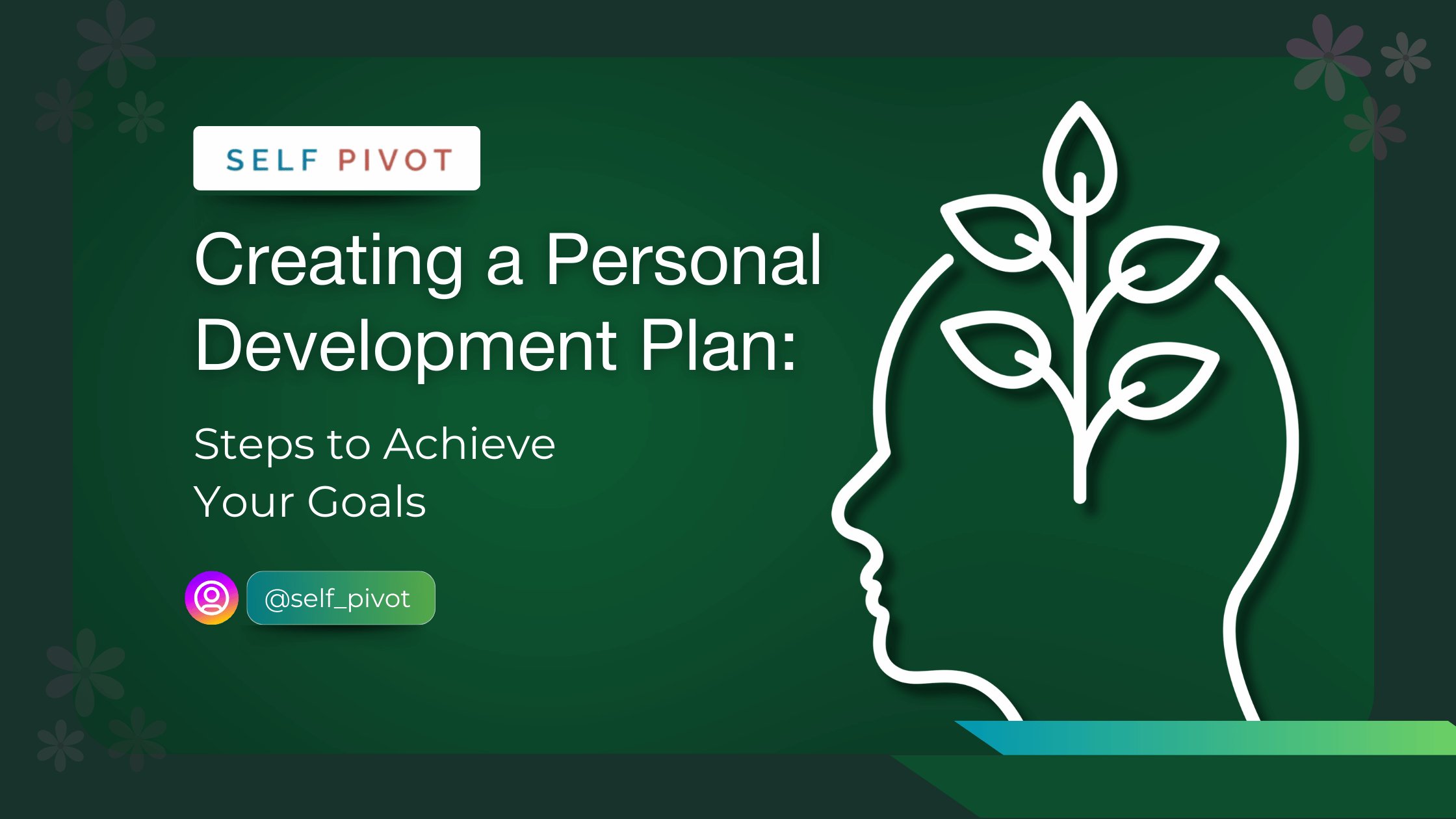Creating a Personal Development Plan: Steps to Achieve Your Goals
Personal development unlocks your potential and helps you complete your goals. This article is a complete guide to creating a personal development plan for a successful life.

Personal development unlocks your potential and helps you complete your goals. This article is a complete guide to creating a personal development plan for a successful life.
Personal development is a lifelong process. It’s a way for people to assess their skills and qualities, consider their aims in life, and set goals to realize and maximize their potential. A Personal Development Plan (PDP) is a structured process that reflects upon your learning, performance, and achievements as well as plans for your personal, educational, and career development. Here’s a step-by-step guide to creating an effective PDP to achieve your goals.
Step 1: Self-Assessment
The first step in creating a personal development plan is to assess yourself. Self-assessment helps you understand your strengths, weaknesses, and the areas that need improvement. Ask yourself the following questions:
- What are my strengths?
- What are my weaknesses?
- What skills do I have?
- What skills do I need to develop?
- What are my core values?
- What motivates me?
- What are my interests and passions?
Reflecting on these questions can provide insight into your current state and help you identify areas for growth. Use tools such as SWOT analysis (Strengths, Weaknesses, Opportunities, Threats) to gain a clear picture of your personal and professional profile.
Step 2: Define Your Goals for Personal Development
Once you have a clear understanding of your strengths and areas for improvement, the next step is to define your goals. Setting SMART goals (Specific, Measurable, Achievable, Relevant, Time-bound) is crucial for the success of your PDP. Here’s how you can do it:
Specific: Clearly define what you want to achieve. Vague goals lead to vague outcomes.
Measurable: Ensure you can track your progress. What metrics will you use to measure success?
Achievable: Set realistic and attainable goals. Stretching too far can lead to frustration.
Relevant: Align your goals with your overall life objectives. They should be important to you.
Time-bound: Set a deadline for your goals. This creates a sense of urgency and prompts action.
Step 3: Create an Action Plan
Having goals is not enough; you need a detailed action plan to achieve them. Break down each goal into smaller, manageable tasks. Identify the resources you will need and the steps you must take. Here’s a template you can use:
Goal: (What you want to achieve)
Tasks: (List the specific tasks to achieve the goal)
Resources: (Identify resources such as time, money, skills, and support needed)
Timeline: (Set deadlines for each task)
Milestones: (Establish checkpoints to monitor progress)
Step 4: Develop New Skills
Personal development often involves learning new skills or enhancing existing ones. Identify the skills you need to achieve your goals and seek opportunities to develop them. This can include taking courses, attending workshops, reading books, or finding a mentor. Here are some tips for effective skill development:
Commit to Continuous Learning: Adopt a mindset of lifelong learning. Stay curious and open to new experiences.
Practice Regularly: Consistency is key to mastering new skills. Practice regularly and seek feedback to improve.
Network: Connect with others in your field. Networking can provide support, resources, and new opportunities.
Reflect: Regularly reflect on what you’ve learned and how you can apply it to achieve your goals.
Step 5: Monitor Your Progress
Regularly monitoring your progress is essential to stay on track and make necessary adjustments. Review your action plan periodically and assess what is working and what is not. Ask yourself:
Are you meeting your deadlines
Are you facing any challenges
Do you need to adjust your goals or action plan
Personal Development: Celebrating Your Successes
Keeping a journal or using digital tools can help you track your progress and stay motivated. Celebrate small victories along the way to stay motivated and recognize your achievements.
Step 6: Personal development fuels motivation and success
Staying motivated is crucial for achieving your goals. Here are some strategies to maintain motivation and overcome obstacles:
Visualize Success: Imagine how achieving your goals will positively impact your life. Visualization can boost motivation and confidence.
Seek Support: Surround yourself with supportive people who encourage you. Share your goals with friends, family, or a mentor.
Stay Positive: Maintain a positive mindset. Focus on what you can control and take proactive steps to overcome challenges.
Reward Yourself: Celebrate your achievements, no matter how small. Rewards can be a great motivation booster.
Be Flexible: Life is unpredictable, and sometimes you may need to adjust your goals or plans. Be adaptable and resilient in the face of challenges.
Step 7: Reflect and Revise
Personal development is an ongoing process. Once you achieve your goals, take time to reflect on your journey. What worked well? What could you have done differently? Use these reflections to revise your personal development plan and set new goals. Continuous improvement is the essence of personal growth.
Personal development is the cornerstone of reaching your goals
Creating a personal development plan is a powerful way to achieve your goals and realize your potential. By following these steps—self-assessment, defining objectives, creating an action plan, developing new skills, monitoring progress, staying motivated, and reflecting—you can make a roadmap for success. Remember, personal development is a lifelong journey. Embrace it with an open mind and a commitment to growth, and you will achieve great things. Self-Pivot is an Online Mental Health Therapist, we can help you to develop a tailored personal growth plan and improve your self-awareness to achieve your goals and improve your self-awareness.












